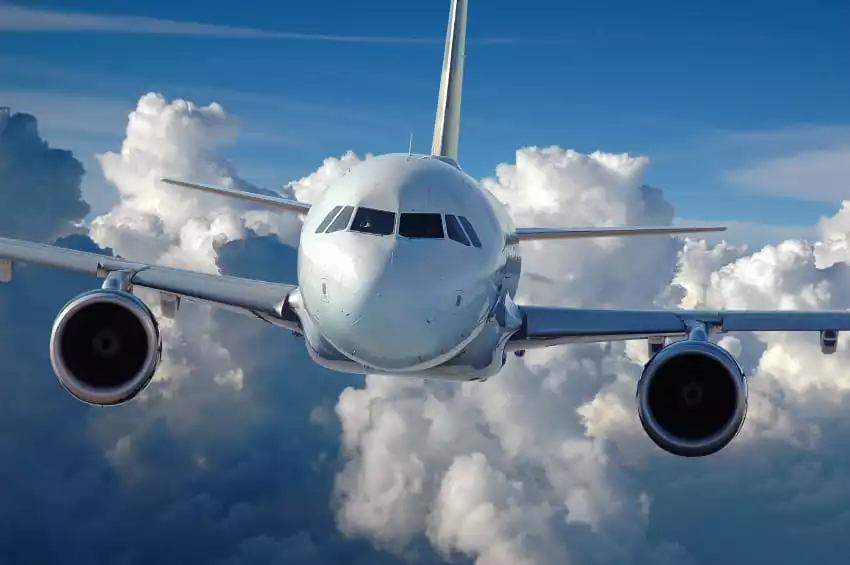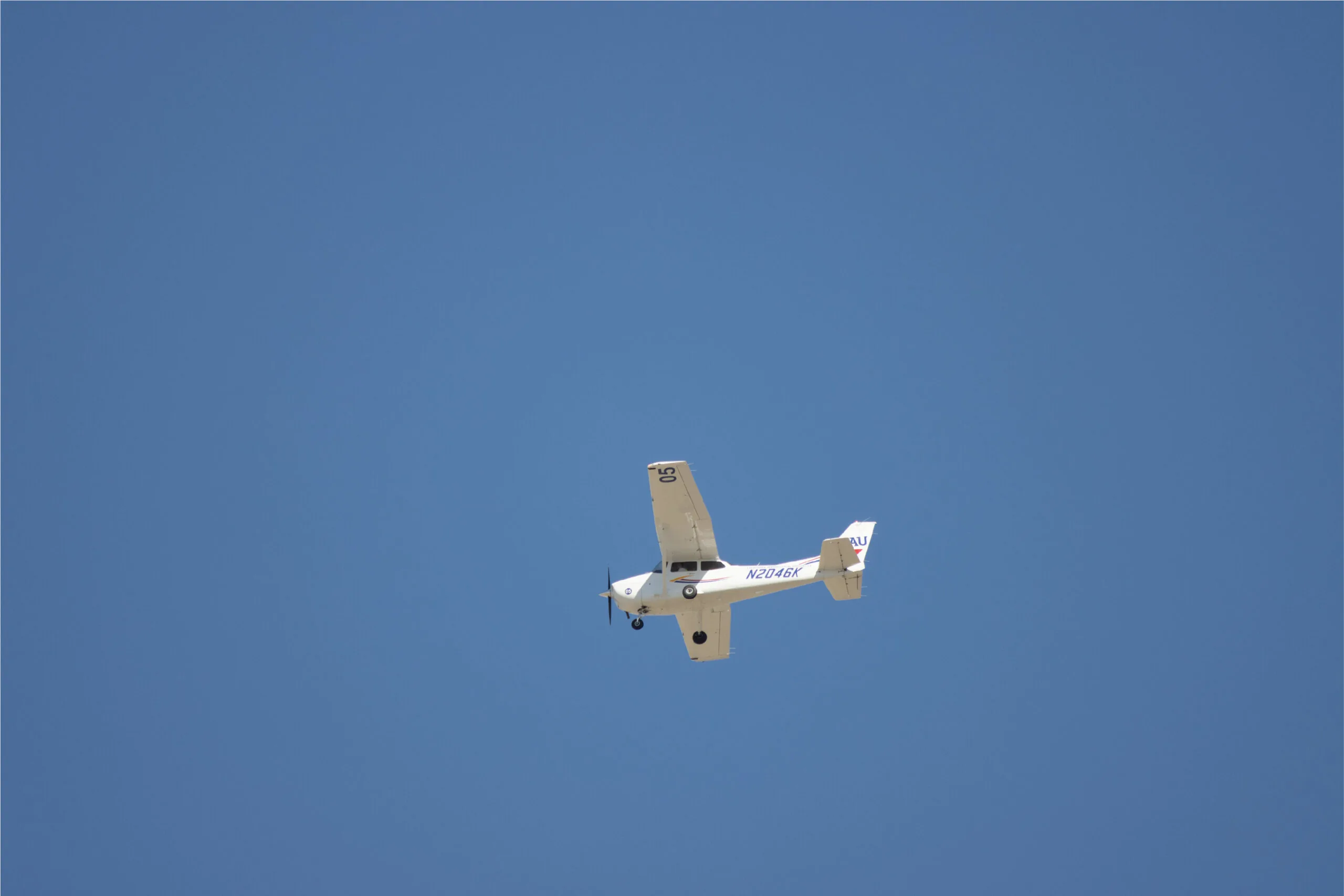If an airplane can zoom along at supersonic speeds and provide Wifi on demand, why are passengers still grabbing for barf bags and gripping armrests when it comes to turbulence? Why can’t pilots just stay away from it?
The short answer: They can’t. Turbulence is basically weather, and therefore about as predictable.
What is Turbulence?
Air is not stationary. It is a constantly moving stream of molecules. Since air itself is always on the go, when an aircraft encounters irregular atmospheric movement, it (along with the people and objects inside) will experience a temporarily bumpy ride.
Because contending with air molecules is the very definition of flying, pilots consider turbulence normal and expected. The rough air they encounter is caused by any number of meteorological factors.
To standardize the different intensities of turbulence, the aviation industry uses the following classifications:
Light: Noticeable shifting but does not cause most unsecured objects to move.
Moderate: Attitude or altitude shifts noticeably. Drinks spill.
Severe: Unsecured objects tossed around the cabin; large variations in attitude/altitude; injuries may result.
Extreme: Aircraft is difficult to control; damage to aircraft components may occur.
Major Causes of Turbulence
Understanding the major causes of turbulence helps pilots to avoid them. These include:
Thermal Air/Thunderstorms: Warm, rising air making its way through the colder air, or in one jet stream meeting another, can cause a few bumps. This is common on hot summer days. Where this atmospheric behavior results in a thunderstorm or cumulus clouds, pilots steer clear. Not only can a storm cause turbulence, hail might damage cockpit windows.
Mountains: Around high mountain ranges such as the Rockies or Alps, strong winds (usually 25 knots or more) can be pushed upwards by high summits. Downwind, these can cause waves anywhere from 5 to 30 miles away. That can result in turbulence for aircraft.
Wind Shear: Plain old ordinary wind at low altitudes can cause turbulence, but under certain conditions, wind shear—a short-distance, sudden shift in the speed or direction of wind—can wreak havoc with beverage service. Low-altitude wind shear usually takes place along weather fronts, near temperature inversions or buildings, or within thunderstorms. It can occur both horizontally or vertically.
Other Airplanes: “Wake turbulence” is why air traffic controllers sometimes avoid giving immediate takeoff clearance to airplanes waiting their turn on the runway. When larger airplanes take off, they do so at a high rate of speed and move a great deal of air out of the way as they do so. Swirling air is left behind for a while. Because tower controllers want to ensure safe runways, a widebody such as a Boeing 777 leaves behind a waiting period of two minutes at the airport it just departed.
These types of turbulence can usually be watched for and avoided. However, since turbulence can occur even in clear skies, most airlines ask passengers to keep their safety belts fastened whenever seated.
Clear Air Turbulence
The turbulence that causes the most distress is Clear Air Turbulence or CAT. While CAT isn’t necessarily more dangerous or severe than other kinds of turbulence, what makes it a particular enemy of both passengers and pilots is that it undetectable on current radar in most cockpits and occurs in clear, cloud-free air.
CAT usually occurs between 20,000 and 49,000 feet. It’s most likely caused by dry, upward-rushing air interacting with the stratosphere. LIDAR (Light Detection and Ranging), which uses ultraviolet laser radiation to produce a better picture of changes in air density, may soon prove useful in the cockpit to avoid CAT.
Is Turbulence Dangerous?
Commercial pilots are loathed to upset their passengers and take great care to plan their flights around potential sources of turbulence. Sometimes, air traffic controllers can warn them of rough patches or, with reports from other pilots, find paths above or below streams of bumpy air. However, this isn’t always possible, and both pilots and passengers must plow through.
Nervous fliers are understandably concerned about turbulence, not necessarily because of the jolting ride it can create, but because they fear it means the airplane will break apart. If that’s a concern, it’s important to understand that airplanes undergo extensive engineering reviews and rigorous testing to ensure they can endure immense amounts of strain on their airframe and wings. Passenger airplanes, in particular, are designed and tested to withstand turbulence far beyond even the most violent video ride wind gust can throw at it.
Although an extremely small number of fatal plane crashes across the entire history of passenger aviation can be partially attributed to turbulence, irregular air patterns are usually listed as only contributing causes. As is the case in most aircraft accidents, a chain of events is to blame in these cases, not just one anomaly or merely a sudden disruption in airflow.
So Turbulence Isn’t Dangerous?
Turbulence can indeed be dangerous to both crews and passengers, but not in the way nervous fliers might assume. Aircraft damage and injuries can result from severe turbulence.
Injuries most often occur when people inside the aircraft are hit by unsecured objects or are thrown against the airplane itself. Because flight attendants are usually the last to buckle up during turbulence, they can sustain serious injuries; turbulence is one of the peak causes of on the job injuries they experience. Those can range from back injuries to second-degree burns from hot water or coffee.
Passengers who do not fasten their safety belts are in danger of becoming injured at a higher rate than those who do. In fact, the only fatality from a 1997 severe turbulence incident on United Flight 826 was that of a passenger who was not wearing her safety belt.
But how dangerous is dangerous? In 2017, 17 people—12 passengers and 5 crew members– suffered injuries as a result of turbulence. To put this in perspective, 2.5 million passengers fly in and out of American airports every day. Even with the threat of unexpected turbulence, air travel is still safer than any other mode of transport.
Ready to soar in your aviation career?
Mr. Matthew A. Johnston has over 23 years of experience serving various roles in education and is currently serving as the President of California Aeronautical University. He maintains memberships and is a supporting participant with several aviation promoting and advocacy associations including University Aviation Association (UAA), Regional Airline Association (RAA), AOPA, NBAA, and EAA with the Young Eagles program. He is proud of his collaboration with airlines, aviation businesses and individual aviation professionals who are working with him to develop California Aeronautical University as a leader in educating aviation professionals.










